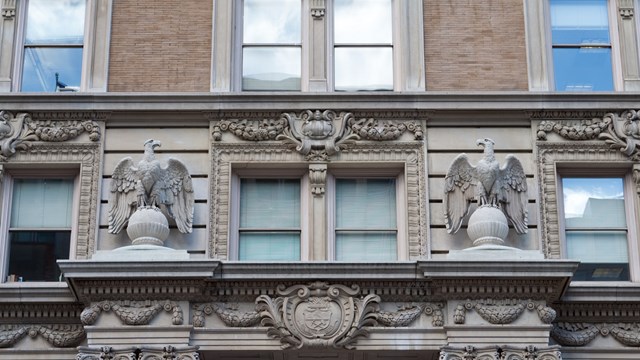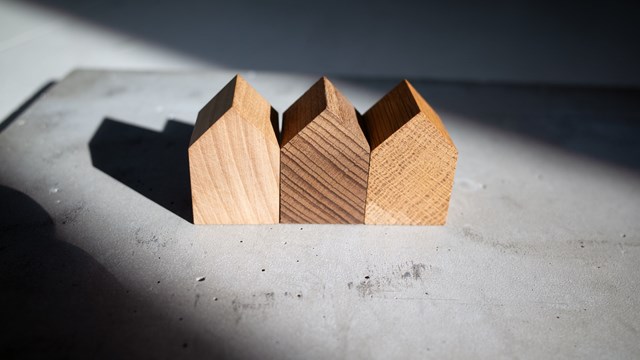
Ever since “Romeo and Juliet” made them famous, balconies have been popular additions to our homes and living spaces. For co-op and condo communities, balconies can add an extra perk, a few more feet of living space that allow us to enjoy the outdoors and some time in the sun.
As with any structure, balconies need a steady diet of care and maintenance to look their best and last their longest. What goes into caring for balconies and what happens when they need fixing? With proper planning and the right tools, maintenance and repair can add years of enjoyment and value to your co-op or condominium community.
How They Work
For the most part these days, balconies are built out of steel and concrete with a few wood and steel models mixed in here and there. According to Stan Wellinsky, vice president of Valcourt Building Services LLC in Elizabeth, New Jersey, there are two kinds of concrete balconies: continuous slab, which is simply an extension of a building’s concrete floor slab, and those which are constructed from steel frames that are mounted to the structure externally. Steel planks extend from the building’s frame and are then filled with concrete. On both types of balconies, railings are added after initial construction and are either embedded into the balcony or surface mounted.
Keep Them Looking Good
Concrete balconies “should last forever with routine maintenance,” Wellinsky says. Without proper maintenance, however, “I’ve seen them develop problems in 10 years or less.”
But what qualifies as “proper maintenance?” The first step to finding signs of deterioration is to look for them, says R. Neal Eisenberg, a preservation and restoration consultant with Gotham Waterproofing & Restoration in Bayonne, New Jersey. On balconies, owners should look for cracks, rust stains, salt stains or any discoloration in the roof or floor. These are signs that the metal helping to support the balcony may be rusting, or water may be deteriorating the slabs.
According to the professionals, it’s best to start with establishing a baseline and knowing how structures like balconies and porches age each year. “The maintenance person should do a visual inspection, documenting any problems he sees,” says Wellinsky. “If there’s a crack two inches long, he should record it on a spreadsheet. That establishes a benchmark early on.” That way, the maintenance person can check back during the next inspection and see if the crack has grown or changed in any way. “If you can catch it early, there are things that you can do to slow it down. If you wait too long, it can get serious.”
According to Eisenberg, the best thing is to watch the discoloration or cracks for at least six months. If the cracks, for example, aren’t very large and aren’t getting bigger, there may be no need to worry. Maybe there was a problem with the construction of the balcony, but the balcony isn’t at risk of further accelerated deterioration.
In New York City, a general, exterior safety inspection of buildings over six stories (including any balcony or terrace features) must be completed by an architect or engineer and filed with the New York City Department of Buildings (DOB) every five years to comply with Local Law 11 regulations. Noncompliance results in hefty fines—not to mention the risk of serious injury or property damage from unsafe conditions.
The five-year interim between Local Law 11 inspections shouldn’t be interpreted as clearance for buildings to ignore their balconies and terraces the remaining time between inspection visits, says Eisenberg. “If there are any suspected conditions, you can’t just leave them [between inspections.] Buildings can be heavily fined or even closed if they do not comply. Local Law 11 is an unusual law, and there are very few municipalities that have a law as strict as New York City.”
If an owner suspects their terrace or balcony might have structural damage, they should bring the issue to their board or managing agent’s attention immediately. To verify the problem and assess the balcony’s condition, the board might then consider calling in a specialist to inspect the spot in question and offer some guidance toward repairing it. Employing a quick fix and just covering a balcony with an outdoor carpet is not a good option. It only masks the problem, and can make it worse by locking moisture under it. The same can be true of some paints and water sealers. Some surfaces have been treated with an almost invisible sealer that may not react well with other products. Or, the surface may need to “breathe.” Tiles can be good, but they need to have proper drainage underneath. If not, they, too, will lock moisture in and cause some catastrophic problems.
Balcony railings and rooftop barriers can also be the source for problems. Rusting or loose railings should be checked for further deterioration, just as balcony slabs are. Sometimes there’s just a loose screw that needs to be tightened, but in extreme cases railings may need to be replaced.
Most buildings will have a set time each year or half a year when they’ll do a visual inspection of their balconies and terraces, checking for outward signs of age or disrepair. “It’s up to the association to determine how often that’s done,” says James Magid, regional vice president of Wentworth Property Management in West Long Branch, New Jersey. For balconies, “it might depend on what they’re made of, how accessible they are and how often they’re used.”
Especially for older buildings, those inspections can be vital. “At the 10-year mark, they need to be looking for signs of corrosion,” says William Schutt, president of MATCOR, Inc., a Philadelphia company that provides corrosion technology services. “They may see rust stains. You shouldn’t see rust stains on your concrete, or find little pieces of rusted material.”
The responsibility for maintenance and repair of exterior spaces could fall either to the apartment owner or the building—but typically, because of how limited common elements are outlined in one’s governing documents, responsibility for structural issues fall to the building itself. “Things like washing and painting and [minor] repairs typically are up to the unit owner, but it all depends on what the association originally determined” when they were setting up their governing documents, Magid says.
Where Problems Arise
So what can the caregivers of balconies expect in terms of trouble over the long term? One of the most common problems afflicting concrete balconies is corrosion. When the steel inside the concrete is exposed to oxygen, it expands. “That cracks the concrete and causes it to fall apart,” says Schutt. For those living near the shore, salt can also cause corrosion. “Especially near the ocean, salt can enter concrete and create an acidic situation. [The concrete] will then corrode, the same way your car would corrode more on the shore than in Pennsylvania,” Schutt says. Once corrosion starts, it can be difficult to stop. “It’s like a cancer,” he adds.
In newly-constructed buildings, problems also may have started before the first resident even moves into the building. “Contamination might have occurred when the contractor built the balconies,” Schutt says. In older buildings, the contractors “may have added concrete accelerator which contains salt.” Salt, in turn, causes corrosion.
Loose railings also can cause problems for residents. According to Wellinsky, embedded railings tend to have problems sooner than their surface-mounted brethren because of the penetration necessary to attach the railings. If not properly sealed, those areas can collect moisture and cause rust and corrosion of the metal railings as well as the surrounding concrete.
Small chips resembling little potholes also can form in the concrete, causing problems when moisture collects in the depressions. In addition to salt and water, indoor/outdoor carpeting can contribute to balcony decline, trapping moisture and not allowing the concrete to breathe. The same is true of certain watertight coatings and sealants that may be applied to concrete before it’s entirely cured.
It’s important, too, to keep track of what may seem like just cosmetic issues because they may be signs of larger structural problems. If things look dicey—if chunks of concrete are found on the ground or cracks are growing rapidly in size, management should pick up the phone and call a structural engineer. When it comes to balconies and their attending issues of safety, it is always better to be safe than sorry and turn to those who know these structures best.
Making Things Better
Many of the problems and issues associated with concrete balcony structures can be prevented with a regular cleaning or power washing once a year, Wellinsky says. Maintenance crews should also be on the lookout for caulking that might need replacing or places where sealant has deteriorated and is in need of a new application. It is essential to engage in an ongoing and thorough maintenance program. Putting off basic care and prevention will only lead to costly trouble later on.
If problems already exist, they may require chipping away old concrete and adding in new concrete. If railings are an issue, some thought might go into changing embedded railings out for the mounted variety. Using protective coatings and rust inhibitors to prevent moisture penetration and quell the concrete-cracking issue of oxidation and rust also can be key in extending railing life. And keeping those railings secure is of paramount importance to the safety and well-being of residents.
Over time, however, boards and management may grow weary of perpetual patching and calls to the structural engineer to check out potential problems with their community’s balconies. If that’s the case, there is an alternative solution—something called cathodic protection. It involves using a form of electrolysis to stop corrosion.
With this system, a low voltage electrical current—less than that found in a 9-volt battery—is placed in the concrete, raising the pH level and lessening the acid around the steel reinforcements, preventing rust and in turn preventing corrosion. “It’s a system that the federal government requires on gas and oil pipelines to stop them from rusting away,” says Schutt, whose firm is one that offers the service. “The damage stops and the repair cycle stops,” Schutt says.
“Under a maintenance deal, you patch and repair, but the deterioration will eventually get worse,” Schutt says. Installing the cathodic protection during repairs will lessen costs in the long run, he adds, eliminating the need for repair crews to chip away at both bad concrete and good concrete as they search for the source of a corrosion problem. Digging to the source and laying new concrete can get expensive. Schutt believes that installing cathodic protection will halt corrosion and save valuable time and resources later on—something especially appealing to large, multi-unit associations.
With proper care and attention, a balcony can last for many years, providing a perfect oasis in which building residents can enjoy the outdoors and enjoy each other’s company. Every dollar spent on maintenance and repair will be well worth the satisfaction of preserving a valuable investment. Who knows? If Romeo and Juliet had a better balcony, things might have turned out differently.
Liz Lent is a freelance writer and a frequent contributor toThe Cooperator.









11 Comments
Leave a Comment